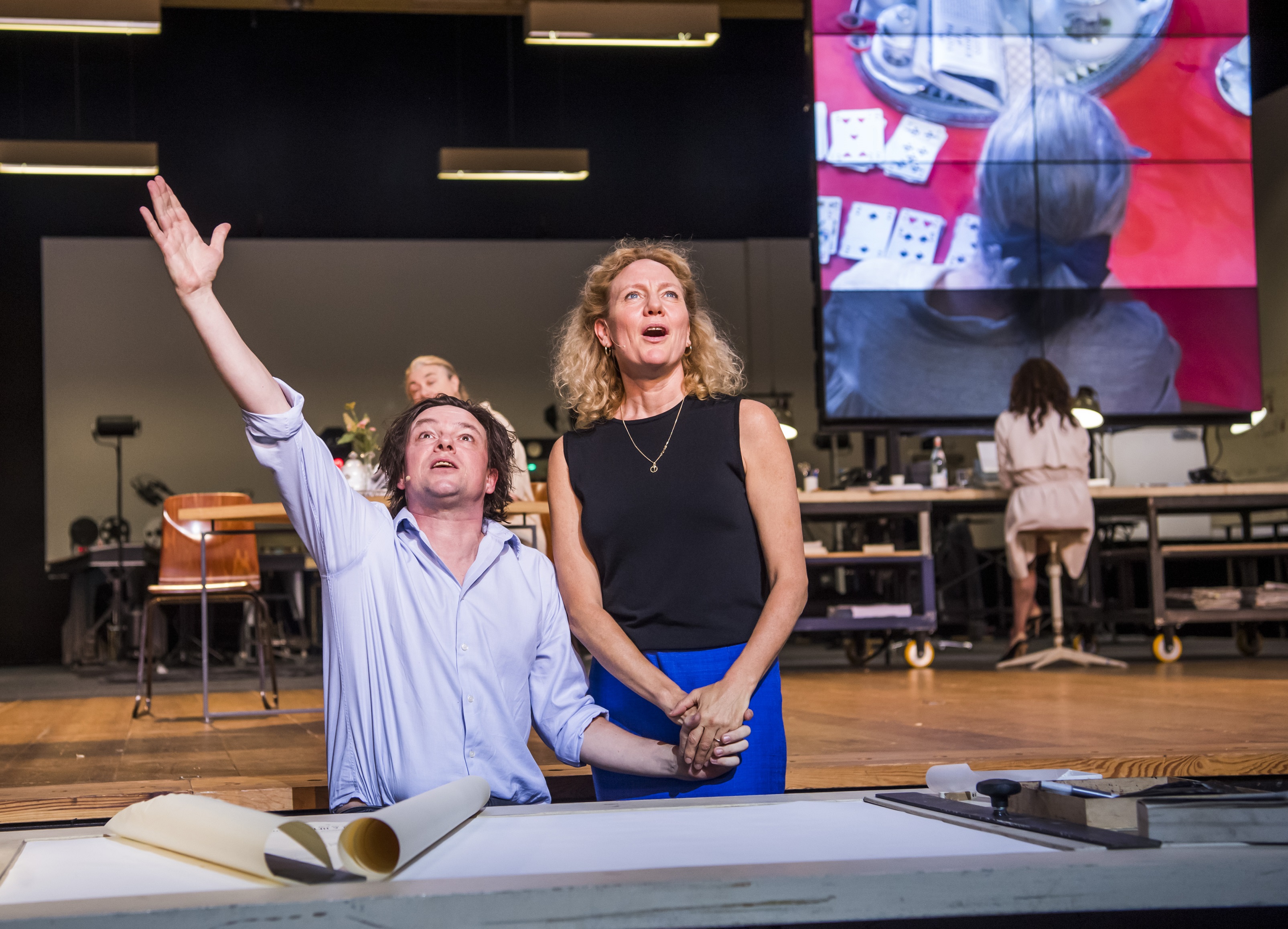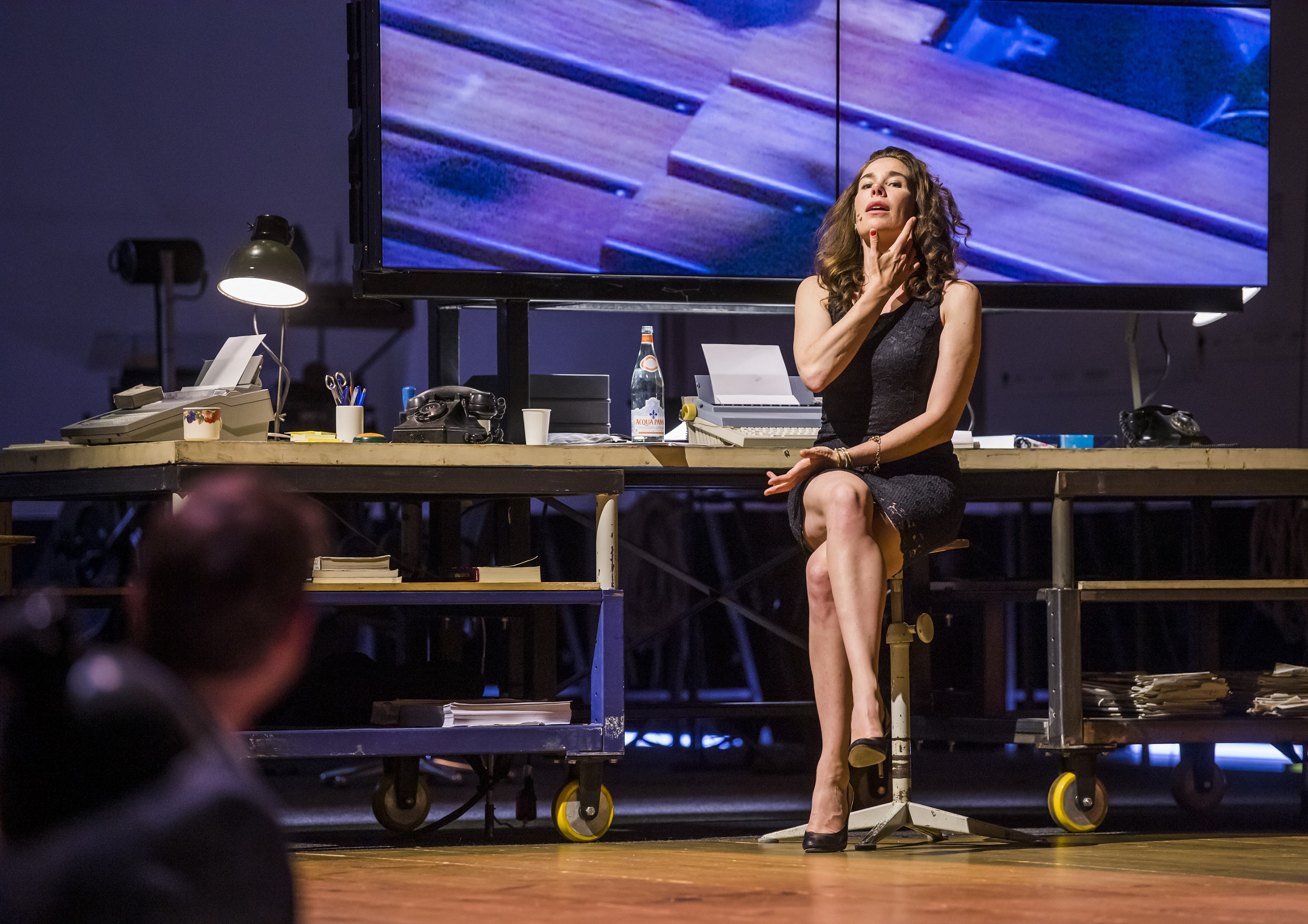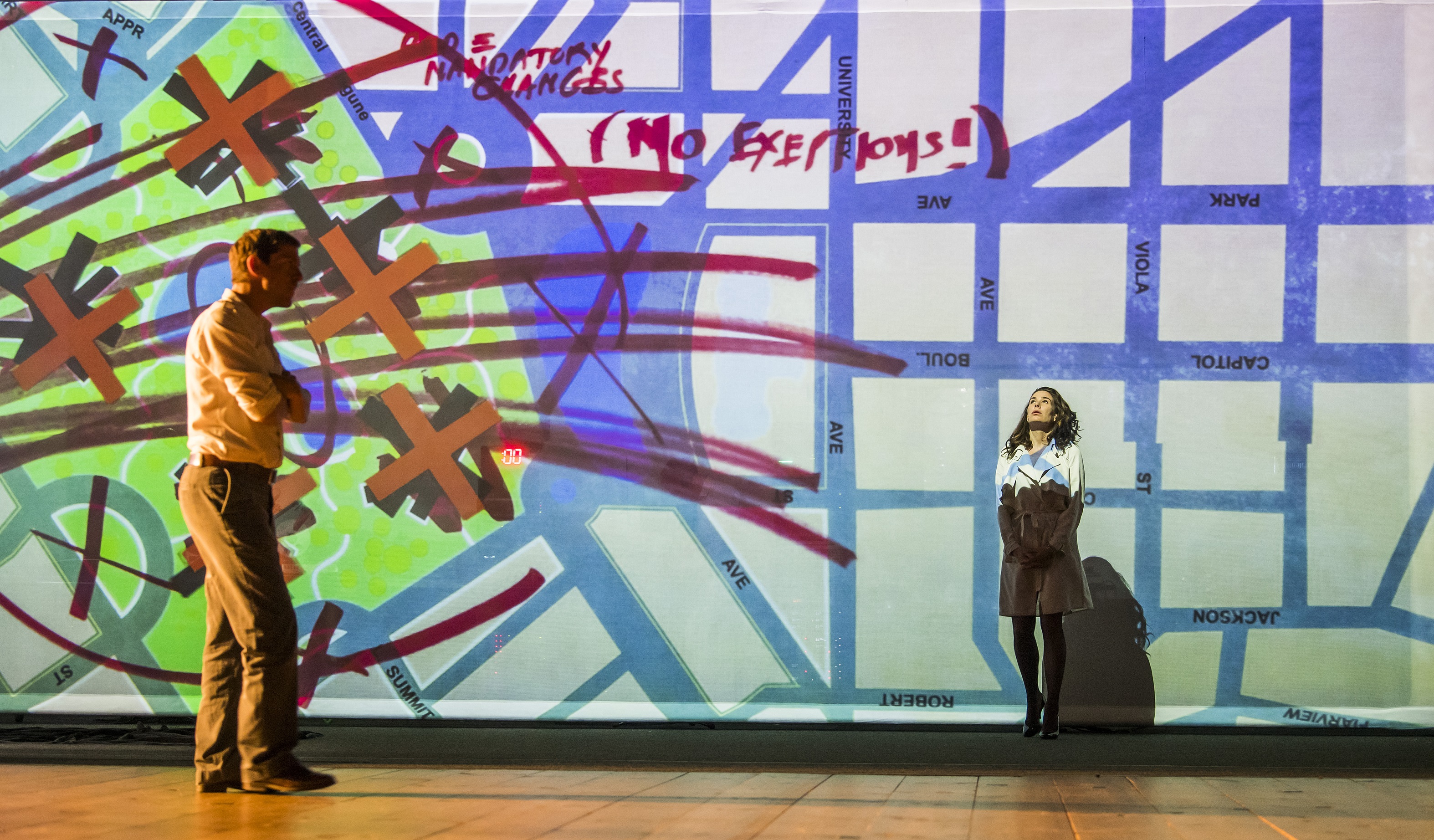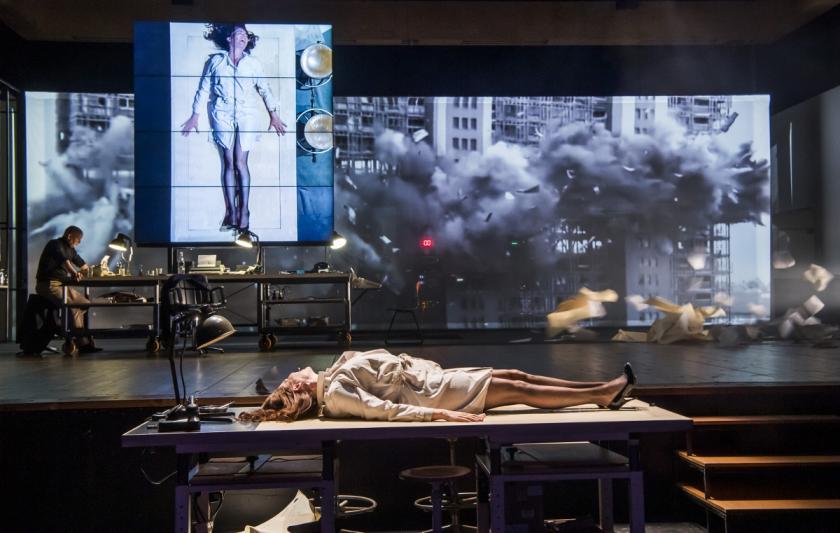Ivo van Hove’s reputation precedes his work as a rumble of thunder goes before a storm. The Manchester International Festival, intensely proud to have on board the man some see as the most original theatre director around, has presented the UK premiere of his 2014 show The Fountainhead, even as memories are fresh in the mind of Van Hove's West End All About Eve and The Damned at the Barbican and he gears up for a major new Broadway revival at the end of the year of West Side Story.
First seen at Van Hove's home base on the continent just over five years ago, this is a marathon of a production (four hours plus), based on Ayn Rand’s pulpy 1943 novel of the same name, about a young American architect, Howard Roark, who is an original genius and knows it. Where others compromise their beliefs and go with convention and the demands of the market, he remains convinced of his own creative ability and integrity. The story sets up his relationships with Peter Keating (Aus Greidanus Jr, pictured above left with Halina Reijn), a friend since college days who is desperate for success but hasn’t an original idea in his body, and Ellsworth Toohey, an architecture journalist whose writing can make or break both people and projects. Intertwined is the contact Roark and Keating have with Dominique Francon, their boss’s daughter possessed of issues of her own. She finally marries press baron Gail Wynand but never loses her fascination with Roark and his genius.
The story sets up his relationships with Peter Keating (Aus Greidanus Jr, pictured above left with Halina Reijn), a friend since college days who is desperate for success but hasn’t an original idea in his body, and Ellsworth Toohey, an architecture journalist whose writing can make or break both people and projects. Intertwined is the contact Roark and Keating have with Dominique Francon, their boss’s daughter possessed of issues of her own. She finally marries press baron Gail Wynand but never loses her fascination with Roark and his genius.
It’s a long and winding saga, but even a summary is enough to show that we are in a kind of fantasy world where people exist the way one’s more lurid imaginary ideas might render them. Jan Versweyveld’s design concept captures this nonliteral way of thinking, utilising a big open stage lined with symbols of the architecture business. In contrast with the 1920s setting of the novel, there’s an indication here that the story could apply more interestingly to the 1960s and 1970s, when brutalist design and ambitious social housing projects were inescapable.
Van Hove’s skill lies in the clarity and impact of his direction and his embrace of mutliple art forms pressed into theatrical service. Live cameras and video close-ups pick out particular areas of the stage and those who populate it, and there is a clean, stark atmosphere to every aspect of the presentation. And when it comes to stagecraft, there could hardly be a bigger piece of theatrical shock and awe than the moment of demolition of a tower block, which comes with every device in the book: wind, smoke, dust, explosive sound and visual collapse all around. Nonetheless, the play remains one of ideas, in keeping with a book that has been compared (charitably, one might argue) to the dramatics of Wagner's Ring Cycle in its slowly uncurling storyline and lengthy soliloquies: the soundscape, too, gets rather Wagnerian at times.
And when it comes to stagecraft, there could hardly be a bigger piece of theatrical shock and awe than the moment of demolition of a tower block, which comes with every device in the book: wind, smoke, dust, explosive sound and visual collapse all around. Nonetheless, the play remains one of ideas, in keeping with a book that has been compared (charitably, one might argue) to the dramatics of Wagner's Ring Cycle in its slowly uncurling storyline and lengthy soliloquies: the soundscape, too, gets rather Wagnerian at times.
There’s a feeling that every so often you have been locked in a windowless room with Nietzsche, Wittgenstein and Adrian Mole all talking. The adaptation here may be the problem: perhaps more attention to the old adage of "Show, don’t tell" would have been worth it. Luckily, the performances are very good, particularly Ramsey Nasr as Roark (pictured below left). The actor conveys a sense of one not quite of this world who believes that to be the case. Halina Reijn's Dominique Francon exists as Roark's de facto female alter ego, someone more than the sum of her parts who nonetheless always reminds you that she is acting and that this is fantasyland. The sense of unreality is something you’re grateful for in the depictions of the book’s sex scenes – at least two of them extremely rough even if, as Van Hove insists, they are essentially consensual in the context of her psychology. Aus Greidanus Jnr, as Peter Keating, possesses a more recognisably everyday persona – eager to suck up to his boss, willing to cheat, a lying toad and very successful as a result – and makes him sympathetic at the same time. Janni Goslinga plays his put-upon girlfriend, Catherine, as a wimp (the story makes her one at first) who finally achieves a sort of nobility – which I liked. Bart Slegers's mean-minded journo Ellsworth Toohey may not resemble any of the species I’ve ever met but perhaps I've just been lucky. Hans Kesting, as the mighty magnate Wynand, may remind some of Robert Maxwell as he comes to dominate the story's second half.
Aus Greidanus Jnr, as Peter Keating, possesses a more recognisably everyday persona – eager to suck up to his boss, willing to cheat, a lying toad and very successful as a result – and makes him sympathetic at the same time. Janni Goslinga plays his put-upon girlfriend, Catherine, as a wimp (the story makes her one at first) who finally achieves a sort of nobility – which I liked. Bart Slegers's mean-minded journo Ellsworth Toohey may not resemble any of the species I’ve ever met but perhaps I've just been lucky. Hans Kesting, as the mighty magnate Wynand, may remind some of Robert Maxwell as he comes to dominate the story's second half.
It’s a pity that Hugo Koolschijn has to take two roles as different architecture firm bosses early on, which doesn’t help to clarify the storyline.The show was by no means sold out on first night: perhaps word got around in Mancland that, for all its devices, it was quite a tough sit. And in the end, for all the conviction that its message makes this a play for today, the result does little more than revive a longtime conundrum: great artists may have to be egotists, but do egotists have to be great artists?















Add comment